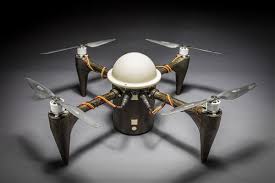
Breaking News
 Battleborn Batteries Responds! Their Overheating Device is a "Feature" not a "Problem
Battleborn Batteries Responds! Their Overheating Device is a "Feature" not a "Problem
 Actor Liam Neeson Outs Himself as MAHA After Narrating Pro-RFK Jr. Documentary Slamming...
Actor Liam Neeson Outs Himself as MAHA After Narrating Pro-RFK Jr. Documentary Slamming...
 Kyle Rittenhouse announced on social media Wednesday that he has tied the knot.
Kyle Rittenhouse announced on social media Wednesday that he has tied the knot.
 JUST IN: President Trump Grants Tina Peters Pardon
JUST IN: President Trump Grants Tina Peters Pardon
Top Tech News
 Build a Greenhouse HEATER that Lasts 10-15 DAYS!
Build a Greenhouse HEATER that Lasts 10-15 DAYS!
 Look at the genius idea he came up with using this tank that nobody wanted
Look at the genius idea he came up with using this tank that nobody wanted
 Latest Comet 3I Atlas Anomolies Like the Impossible 600,000 Mile Long Sunward Tail
Latest Comet 3I Atlas Anomolies Like the Impossible 600,000 Mile Long Sunward Tail
 Tesla Just Opened Its Biggest Supercharger Station Ever--And It's Powered By Solar And Batteries
Tesla Just Opened Its Biggest Supercharger Station Ever--And It's Powered By Solar And Batteries
 Your body already knows how to regrow limbs. We just haven't figured out how to turn it on yet.
Your body already knows how to regrow limbs. We just haven't figured out how to turn it on yet.
 We've wiretapped the gut-brain hotline to decode signals driving disease
We've wiretapped the gut-brain hotline to decode signals driving disease
 3D-printable concrete alternative hardens in three days, not four weeks
3D-printable concrete alternative hardens in three days, not four weeks
 Could satellite-beaming planes and airships make SpaceX's Starlink obsolete?
Could satellite-beaming planes and airships make SpaceX's Starlink obsolete?
This 3D Printed Drone Can Wait Underwater And Launch From The Sea

Under the sea, it lay dreaming. The body, printed from machines, sealed carefully, still functioned. It survived one month under water, then two. The salt did nothing to stop it. It simply was, a waiting state of being. And then, with a flick of a switch and a sent command, it rose from the depths, soaking wet and then suddenly in the sky.
Meet CRACUNS, or the "Corrosion Resistant Aerial Covert Unmanned Nautical System." It's a submersible drone, made by the Johns Hopkins Applied Physics Laboratory, designed to straddle the littoral space between unmanned aircraft and unmanned underwater vessels. It is also made for the littoral, that part of the ocean between the beach and the high sea. Parts of it are 3D printed, to create a watertight body, and other parts are coated in commercial sealant, to keep the water out from the engines. According to Johns Hopkins, its "low cost makes it expendable", though given that the customer is the Pentagon, "low cost" isn't that revealing a metric.
In tests, it survived two months under water, and was still able to fly afterwards. While there's no payload specified, it's easy to imagine a swarm of CRACUNS waiting near a beach before Marines land on it, and then emerging to scout overhead. Or perhaps, armed with a more sinister payload (read: explosives), CRACUNS could become a semi-mobile minefield, put in place temporarily and then removed after the danger has passed.
There's a deep wealth of possibilities for a device like this. Watch the promotional video for it below, and see just how many Pentagonese buzzwords would can spot.:

 First totally synthetic human brain model has been realized
First totally synthetic human brain model has been realized Mach-23 potato gun to shoot satellites into space
Mach-23 potato gun to shoot satellites into space

